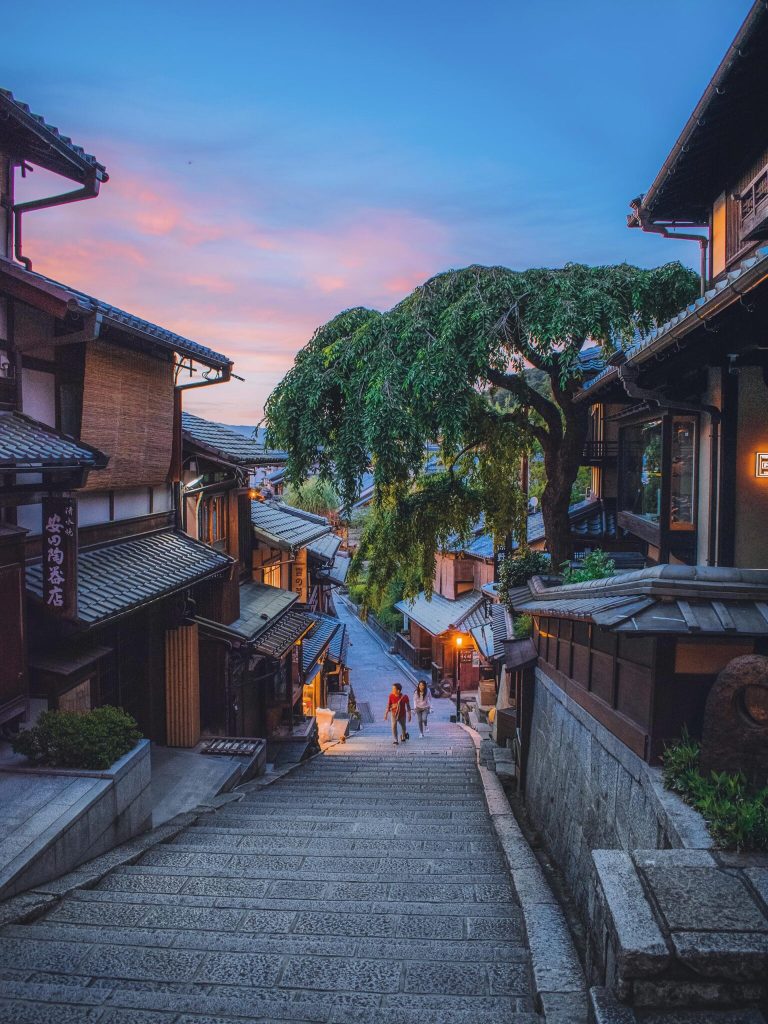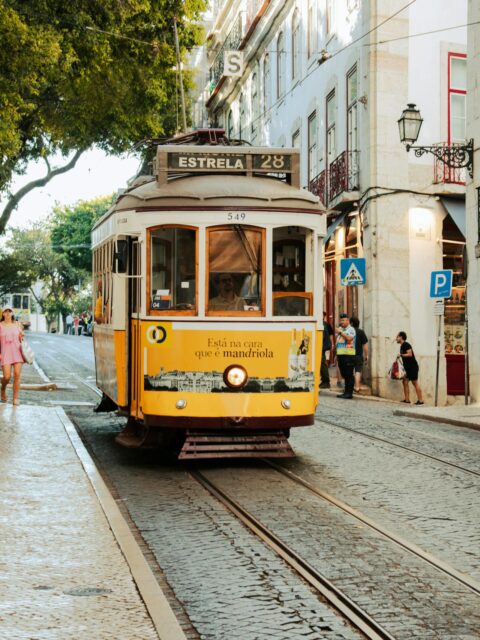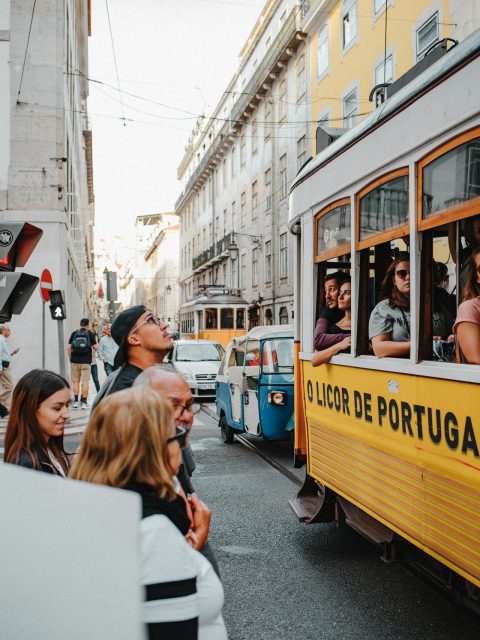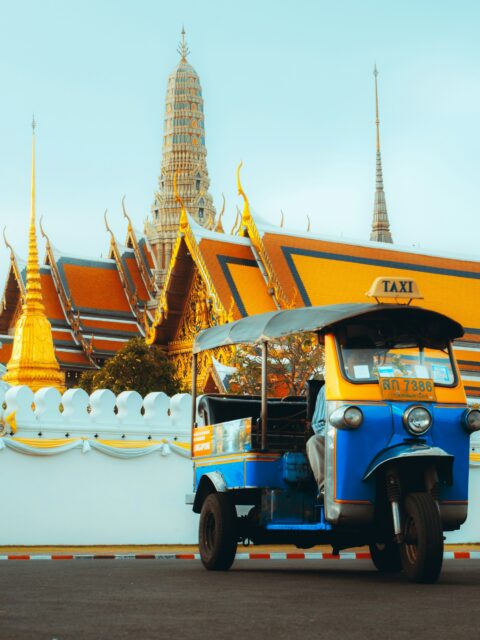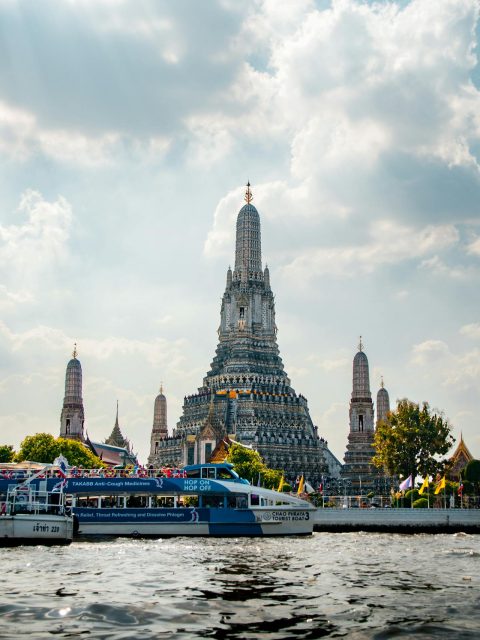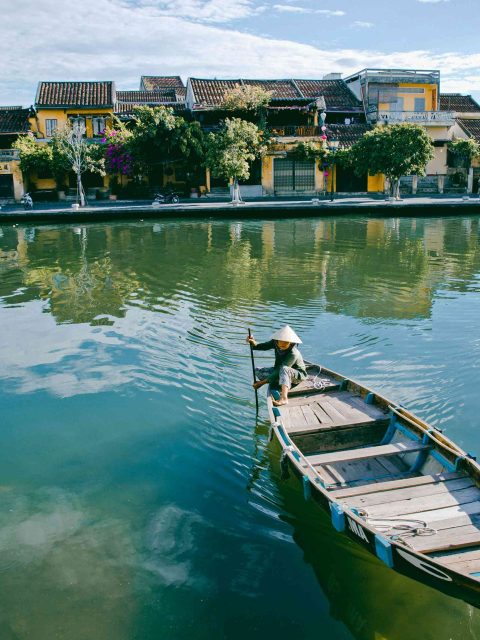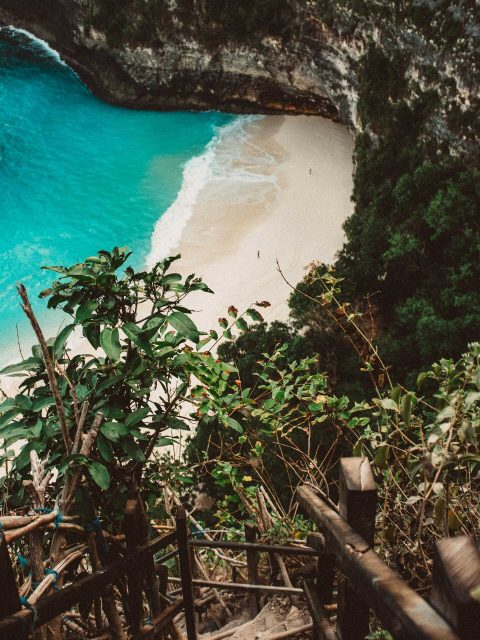2 Week Japan Itinerary for Second-Time Explorers
Set off on a memorable journey with this 2-week Japan itinerary tailored for second-time visitors. Step away from the typical tourist paths and dive into Japan’s hidden gems, where ancient traditions blend seamlessly with modern innovation.
Beyond the bustling streets of Tokyo and the well-known landmarks of Kyoto, this off the beaten path itinerary guides you through lesser-known places in Japan. Discover peaceful rural villages, explore secluded temples, and experience the unspoiled beauty of islands untouched by mass tourism.
Whether you’re savoring local cuisine in the countryside or cycling through the scenic Goto Islands, this itinerary offers a fresh perspective and unforgettable adventures for those looking to experience Japan in a new way.
Chapters
- Japan 2-week Itinerary
- Day 1: Arrive in Tokyo, Explore the City, and Sake-Making Class
- Day 2: Discover Tokyo’s Best Views
- Day 3: Sumo Wrestling, Imperial Palace, and Kabuki Experience
- Day 4: Futuristic Fun in Odaiba
- Day 5: Scenic Train Ride and Countryside Homestay in Izumo
- Day 6: Explore Izumo Taisha Shrine and Hot Springs
- Day 7: Meet a Geisha and Visit Yasaka Shrine in Kyoto
- Day 8: Temples and Scenic Views in Amanohashidate
- Day 9: Nara Day Trip and Mount Kasuga Primeval Forest
- Day 10: Arashiyama Bamboo Grove, Monkey Park, and Ferry to Fukuejima
- Day 11: Cycle Around Fukuejima in the Goto Islands
- Day 12: Visit the Famous Cat Island, Aoshima
- Day 13: Explore Huis Ten Bosch and Transfer to Nagasaki
- Day 14: Nagasaki Historical Tour and Return to Tokyo
Japan 2-week Itinerary
Day 1: Arrive in Tokyo, Explore the City, and Sake-Making Class
Welcome to Japan! It’s the first day of your 2-week Japan itinerary, and there’s no better place to start than in Tokyo, the bustling capital of Japan. Upon your arrival, you’ll be greeted and transferred to your hotel, where you can relax and prepare for an exciting day ahead.
After settling in, begin your adventure with a self-guided walking tour in Tokyo, exploring the city’s dynamic blend of modern and traditional elements. From neon-lit skyscrapers to tranquil gardens and historic temples, you’ll get a glimpse of the city’s unique charm. A must-see is Tokyo Skytree, the world’s tallest tower, offering incredible views from its observation deck, including a breathtaking sight of Mount Fuji on clear days. Continue your journey by visiting Senso-ji Temple, Tokyo’s oldest and most significant temple, steeped in history and local legends.
In the afternoon, immerse yourself in one of Japan’s most iconic traditions: a sake making class in Tokyo. Begin with a tasting session where you’ll try various types of sake from different regions of Japan. Then, it’s time to create your own blend! Choose from a variety of fruits, such as plums, and follow traditional Japanese sake brewing techniques to craft your own unique sake. Your creation will need time to marinate, but by the end of the class, you’ll get a sneak peek of your work.
Day 2: Discover Tokyo’s Best Views
Today, explore the contrasts of Tokyo with a Tokyo city tour that takes you from towering skyscrapers to peaceful green spaces, offering a variety of perspectives on this vibrant metropolis. Start your day by visiting the Tokyo Metropolitan Government Building, which plays a crucial role in the city’s flood control system. Located over 66 feet (20 m) underground, the building features enormous stone pillars, nearly 60 feet (18 m) tall. A guided tour will give you insights into how this engineering marvel helps protect Tokyo from flooding.
Next, elevate your experience with a visit to one of the best views in Tokyo at the observation deck of the Tokyo Metropolitan Government Building in Shinjuku. Rising 756 feet (230 m), you’ll be treated to panoramic views of the Tokyo skyline, including iconic landmarks like Tokyo Tower.
End your day at Shibuya Sky, one of the top spots for the best city views in Tokyo. At over 750 feet (230 m) above the bustling Shibuya crossing, this rooftop observatory provides a perfect vantage point to watch the energy of the city below. As your day winds down, be sure to explore the surrounding area’s restaurants and shops, making this a memorable highlight of your Tokyo sightseeing.
Day 3: Sumo Wrestling, Imperial Palace, and Kabuki Experience
Today, dive into Japanese culture with a sumo wrestling tour in Tokyo. Sumo, Japan’s national sport, is deeply rooted in tradition, with a history spanning nearly 2,000 years. Start your day by visiting a sumo training stable where you can witness wrestlers in action. Your guide will provide fascinating insights into the sport’s history and significance. If you’re curious how to watch a sumo match in Tokyo, the training stables offer a close-up view of sumo rituals and discipline.
Next, enjoy a peaceful Imperial Palace visit by exploring the East Gardens, the only section of the palace open to the public. Stroll through lush lawns, seasonal flowers, and fountains while taking in views of the historic Nijubashi Bridge. Your guided tour of the Imperial Palace will provide a deeper understanding of Japan’s royal family and their residence.
For lunch, try some of Tokyo’s delicious plant-based cuisine. A great option is Loving Hut, a 100% vegan restaurant offering traditional Japanese dishes with a modern twist. Or, visit Vegetarian Beast near Mejiro Station for a colorful, healthy meal, perfect for a mid-day break.
End your day with a Kabuki show in Tokyo. Step back in time to the Edo era as you enjoy this vivid theatrical performance. Where to see a Kabuki performance in Tokyo? Head to the Kabuki-za Theatre, the most famous Kabuki theatre in the city, where male actors bring to life the ancient art form with colorful costumes and dramatic gestures.
On your way back to your hotel, consider exploring the bars and restaurants of the Golden Gai district, a perfect way to unwind after a culturally immersive day.
Day 4: Futuristic Fun in Odaiba
Today’s adventure takes you to Odaiba, a dynamic and high-tech district in Tokyo Bay. Originally built as a small group of fort islands during the Edo period, it has since transformed into a vibrant hub of shopping, entertainment, and futuristic attractions. To reach Odaiba, you can take the sleek Yurikamome train, cross the iconic Rainbow Bridge, or enjoy a relaxing cruise through Tokyo Bay.
Start your day at TeamLab Borderless, an interactive art exhibition that blends technology and creativity, offering a unique perspective on modern art. If you’re a car enthusiast, don’t miss the Toyota City Showcase, where you can explore the latest innovations in automotive technology or admire vintage cars from days past.
For breathtaking views, head to the Telecom Center Observatory on the 21st floor, where you’ll enjoy panoramic sights of Tokyo, including the Rainbow Bridge, Tokyo Skytree, and the Fuji TV Building.
There’s no shortage of things to do in Odaiba. Families can relax at Odaiba Seaside Park, where you can stroll along the beach or take in a view of Mount Fuji from the Daikanransha Ferris wheel. For a more immersive experience, visit the Miraikan Museum, where future technologies and science innovations are displayed in fun and interactive exhibits.
As your day winds down, explore the bustling shops and shopping centers in Odaiba like DiverCity Tokyo Plaza, or indulge in a meal at one of the many sushi bars along the waterfront. Odaiba offers a diverse range of Odaiba family activities and entertainment, making it a must-visit on your Tokyo journey.
Day 5: Scenic Train Ride and Countryside Homestay in Izumo
Today, you’ll leave the bustling streets of Tokyo behind as you board the train to Izumo from Tokyo. The journey will take about 6.5 hours, but the scenic ride offers stunning views of Japan’s countryside and mountains along the way. Upon arrival in Izumo, a city rich in history and tradition, you’ll meet your local host family and begin your countryside homestay in Japan.
Staying in a traditional homestay is one of the best homestay experiences in the Japanese countryside, giving you the opportunity to immerse yourself in the quiet charm of rural Japan. Your host family will introduce you to everyday life in the village, allowing you to explore local culture, food, and traditions. You’ll have the chance to explore rural Japan, meet other villagers, and discover the simplicity and warmth of life in a Japanese rural village.
Over the next few days, you’ll enjoy authentic experiences like cooking Japanese meals with your host, participating in community events, and visiting Izumo city attractions, such as ancient shrines that hold deep cultural significance. Your time in Izumo will offer a true sense of Japanese hospitality and a deeper understanding of the country’s traditions through your authentic homestay experience.
Day 6: Explore Izumo Taisha Shrine and Hot Springs
After a delicious breakfast with your host family, begin your day with a self-guided Izumo sightseeing tour. Your first stop is the Izumo Taisha Shrine, one of the most important and historical shrines in Japan. Dedicated to the god Okuninushi, the shrine is a symbol of good relationships and strong connections, not just between people but all living beings. Known for its spiritual significance in fostering love and marriage, Izumo Taisha attracts visitors seeking blessings for happy unions. You’ll also see one of the largest shimenawa ropes in Japan, which is believed to ward off evil spirits.
In the afternoon, unwind at one of the best hot springs in Izumo. Hot springs in Izumo are known for their healing properties, and soaking in the warm, mineral-rich waters is a perfect way to relax. Consider visiting an onsen ryokan for an authentic onsen experience in Japan.
After a rejuvenating bath, return to your host family for another home-cooked meal, reflecting on your cultural immersion in Izumo before preparing for the next leg of your journey tomorrow.
Day 7: Meet a Geisha and Visit Yasaka Shrine in Kyoto
This morning, say farewell to your host family and head to Kyoto, a city renowned for its rich history and culture. Known for its traditional arts and Geisha experience in Kyoto, the city also boasts beautiful temples, serene gardens, and charming tea houses. After settling into your hotel, enjoy a Gion walking tour through the Kyoto Geisha district, where narrow, historic streets are lined with traditional wooden buildings, teahouses, and shops.
During your tour, you’ll have the unique opportunity to meet a Geisha in Kyoto or a Maiko (apprentice Geisha). Enjoy a traditional tea ceremony while learning about the Kyoto Maiko lifestyle and the intricate training process involved in becoming a Geisha. This cultural experience in Kyoto offers a rare glimpse into an art form that continues to flourish.
Next, take a peaceful Yasaka Shrine visit. Located in the heart of Gion, Yasaka Shrine is one of the best shrines to visit in Kyoto and offers a serene atmosphere, particularly during the evening. As you explore this traditional Kyoto shrine, you’ll experience the deep spiritual energy that permeates this historic site.
To end your day, take a stroll through Pontocho, an area known for its vibrant restaurants and evening ambiance. Finish the evening with a walk along the Kamogawa River, enjoying the peaceful nightscape of Kyoto.
Day 8: Temples and Scenic Views in Amanohashidate
Start your day early as you embark on a journey to Amanohashidate, one of Japan’s most scenic and spiritual locations. Known as the “bridge to heaven,” this picturesque sandbar is a must-see for visitors exploring Amanohashidate. The area is stunning year-round, from the warm summer months to the snowy beauty of winter, and is said to have the power to make wishes come true.
Begin your exploration by taking in the breathtaking views at the Amanohashidate view points, perfect for capturing Japan’s natural beauty. Afterward, head to Chion-ji Temple, one of the best temples in Amanohashidate. Here, visitors pray for wisdom and success, and you can take part in the local tradition of drawing omikuji (fortunes) and tying them to the pine trees on the temple grounds.
Next, continue your journey to Motoise Shrine, one of the most significant cultural attractions in Amanohashidate. The shrine is dedicated to Amaterasu, the Sun Goddess, and holds a special place in Japan’s religious history. As you explore these religious sites in Amanohashidate, you’ll feel the deep spiritual energy and discover why this region is revered by locals and visitors alike.
Day 9: Nara Day Trip and Mount Kasuga Primeval Forest
Today, take a Nara day trip to explore the tranquil beauty of this historic city, known for its cultural heritage, lush parks, and friendly deer. Begin your journey with a visit to Nara Park, where you’ll find plenty of walking trails and opportunities to interact with the local deer. One of the highlights is a hike through the Mount Kasuga Primeval Forest, located behind the Kasuga Taisha Shrine. This ancient forest, home to more than 175 species of trees, offers an immersive nature walk in Nara, where you can explore hidden caves, waterfalls, and serene pathways.
Nara sightseeing wouldn’t be complete without visiting Todai-ji Temple, home to the massive Daibutsu Buddha statue. This iconic temple is a must-see for its stunning architecture and cultural significance. Continue your journey through historical Nara by visiting Naramachi, the former merchant district, where you’ll see beautifully preserved traditional homes dating back to the 1600s.
If you’re visiting during autumn, you’re in for a special treat. The vibrant red, orange, and yellow foliage adds a magical touch to the forests and temples, creating a picturesque backdrop for your adventure.
After a fulfilling day of exploring nature in Nara and discovering the city’s cultural landmarks, return to Kyoto in the evening for a relaxing dinner at a local restaurant.
Day 10: Arashiyama Bamboo Grove, Monkey Park, and Ferry to Fukuejima
Start your day with a scenic ride on an open-air steam train to Kameoka, a small city just outside Kyoto. From there, enjoy a peaceful boat ride down the Hozu River, arriving in the tranquil Arashiyama district, known for its natural beauty and historical sites. Begin your visit at Tenryu-ji Temple, a UNESCO World Heritage Site, renowned for its beautifully landscaped gardens.
After exploring the temple, take a walk through the famous Arashiyama Bamboo Forest, where towering bamboo trees create a serene, almost magical atmosphere. The walk through the bamboo grove is relatively short, so take time to explore other nearby attractions, such as art galleries and additional Kyoto nature spots.
Next, visit Iwatayama Monkey Park, where over 100 Japanese macaques live. Perched on a hill, the park provides great views of Kyoto and a chance to observe the monkeys in their natural habitat. Visiting Iwatayama Monkey Park in Kyoto offers a unique opportunity for wildlife encounters in Japan, with the possibility to even feed the monkeys.
In the late afternoon, return to Kyoto and catch an overnight ferry to Fukuejima, part of the Goto Islands. This ferry ride in Japan will give you a relaxing journey to your next destination, offering scenic views along the way.
Day 11: Cycle Around Fukuejima in the Goto Islands
Start your morning by watching the sunrise as your ferry docks at Fukuejima, part of the Goto Islands, a group of islands with a rich history. During the 18th and 19th centuries, when Christianity was banned in Japan, many Christians fled to these remote islands to secretly practice their faith. Today, you can find several Catholic churches across the islands, with four recognized as World Heritage Sites.
Once you settle into your accommodations, meet your guides for a Fukuejima bike tour. As you explore Fukuejima by bike, you’ll visit landmarks like Dozaki Church, which holds important relics from the Christian settlers. Along the way, enjoy the island’s natural beauty, and if the weather is warm, stop at one of the pristine beaches for a swim.
In the evening, visit a unique ramen karaoke bar for dinner, drinks, and entertainment, adding a fun twist to the day. This bike tour in Fukuejima offers the perfect balance of history, nature, and adventure, making it one of the best bike tours in the Goto Islands.
Day 12: Visit the Famous Cat Island, Aoshima
After breakfast, take a boat to Aoshima Island, also known as Cat Island Japan. Once a bustling place during the region’s whaling boom, Aoshima is now home to a large colony of cats. Fishermen originally brought cats to the island to control the rodent population on their boats, but over time, the cats have multiplied and now roam freely around the island.
As you visit Aoshima Island, you’ll walk through peaceful surroundings, accompanied by friendly felines. While there isn’t much to do besides spending time with the cats, the island offers a calm and quiet retreat from busy city life. You can wander the tranquil paths with the cats by your side or sit by the shore, gazing at the Seto Inland Sea as the cats play, stretch, or nap nearby.
It’s important to remember that Aoshima is not a typical tourist destination—there are no accommodations, cafes, or even vending machines, so be sure to bring everything you need. Also, respect the peacefulness of the island and the privacy of its residents, as some locals may prefer solitude over interaction with visitors.
Day 13: Explore Huis Ten Bosch and Transfer to Nagasaki
Start your morning by leaving Fukue Island and heading to Huis Ten Bosch theme park in the city of Sasebo. This unique park is designed to resemble a Dutch village, complete with canals, windmills, and vibrant flower gardens. Twice the size of Disneyland, Huis Ten Bosch offers a range of attractions that provide a mix of European charm and Japanese innovation. Spend the day exploring the best things to do at Huis Ten Bosch, from scenic boat rides along the canals to virtual reality experiences and seasonal light shows.
Upon arrival, make your way to the top of Mount Inasayama, which offers stunning panoramic views of the city from over 1,000 feet (333 m) high. Whether you take the ropeway or trek up by bus, the glittering night view from the summit is considered one of the best in Japan. The scenic outlook of the harbor and surrounding landscape provides a memorable end to your day.
Day 14: Nagasaki Historical Tour and Return to Tokyo
Start your final morning in Japan with a Tokyo historical city tour. Begin by exploring Dejima, an artificial island that once played a key role in Japan’s trade and cultural exchange with the Dutch. This site offers insight into the unique relationship between Japan and the Netherlands, showcasing how these two nations influenced each other during the Edo period.
Next, visit Nagasaki Peace Park, a poignant reminder of the events of World War II. If time permits, stop at the Atomic Bomb Museum to gain a deeper understanding of the impact of the bombing on August 9, 1945, and reflect on the city’s ongoing journey toward peace and reconciliation.
As your final day in Japan winds down, take the opportunity to explore some of Tokyo’s cultural heritage sites or enjoy a last bowl of ramen. Whether visiting a serene garden or taking a final walk through the city, there are plenty of things to do before leaving Tokyo to make the most of your remaining time.
Later in the day, you’ll transfer back to Tokyo for your flight home or your next destination. Make sure to allow yourself enough time to prepare for your Tokyo departure. Safe travels!


